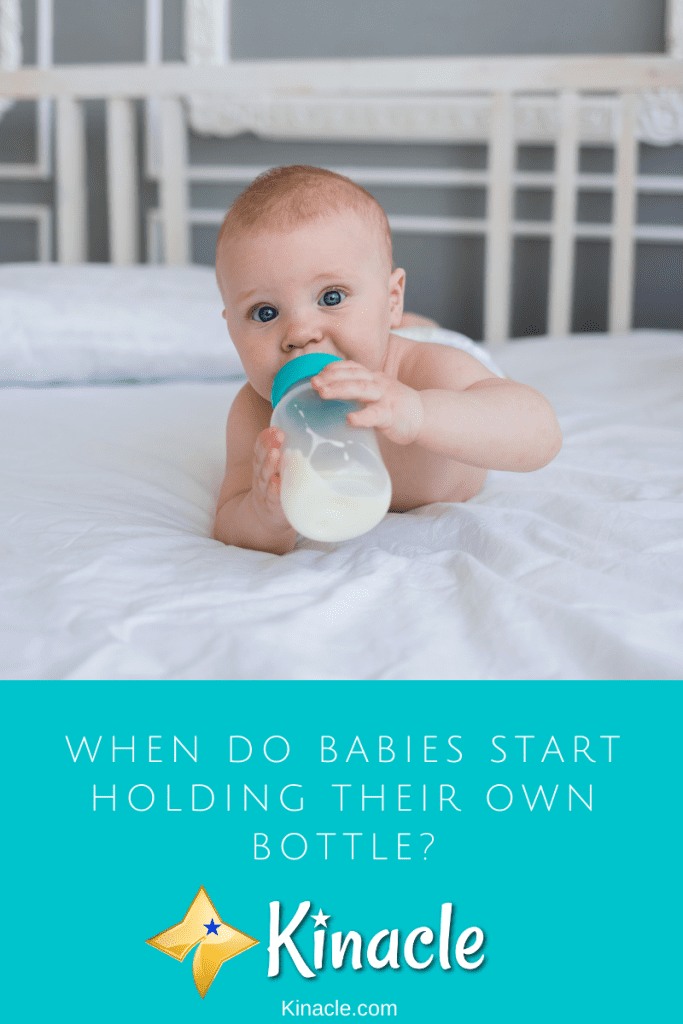
Feeding your baby can be among the most precious moments of your life as a parent. Every parent cherishes the time that they are able to cuddle and hold the bottle for their baby (although we admit, it’s much harder at 2 AM after a week of little sleep!)
Then here comes the laundry piling up, the dishes to wash, and that soothing shower that you haven’t had time to enjoy for months. Desperate to take at least something off of your plate, you may find yourself wondering – when can a baby hold a bottle on its own? Here’s what experts found.
When do babies start holding their own bottle?
Holding and drinking from a baby bottle requires balance, coordination and fine motor skills. Though it may look like a simple task, babies need some time and practice to learn this skill.
So at what age do babies hold their bottle? Most babies may begin holding their own bottles by the time they are able to sit on their own and practice grasping objects. This usually happens at around 6 to 10 months of age.
Sitting without support is a sign that your baby can stabilize themselves in an upright position which is essential for feeding. Grasping shows that he or she is ready to practice their eye and hand coordination, enabling them to hold and support the bottle as he is feeding themselves. These multitasking skills need to work hand-in-hand when babies will feed and hold the bottle on their own.
Signs of Readiness to Hold the Baby Bottle
Before teaching your baby to hold a bottle, make sure that he is ready to learn this new skill. The signs that babies are ready to hold their own bottles include:
- Showing interest and reaching for their bottles
- Grasping and putting things or food in their mouth
- Able to sit on their own
- Can stay sitting while playing with a toy
- Placing his hands on the bottle while feeding
Though this is the typical range, some babies may still achieve the skill earlier or later than the rest. Just like walking, teething, or speaking, babies largely differ in achieving their skills and the same rule applies for the ability to hold their own bottles.
Do’s and don’ts when teaching babies to hold their bottles
We know that you’re a bit excited to teach your little one to hold the bottle on their own, but remember, learning this skill is not a one-day process. So to have a quick reference of what you can or can’t do while teaching self-feeding to your baby, here are some tips that you may ponder on:
Do’s in teaching babies how to hold the bottle
- Buy some easy-grip baby bottles and other child-safe teething toys that they can use to practice their fine motor skills.
- Position your baby’s hands in the bottle and guide them with your own hands first.
- To encourage your baby to follow, demonstrate how you pick up the bottle or teething toy from a flat surface and place it on your mouth.
- Spend enough tummy time to increase your baby’s core strength. This will help her become more stable when sitting up.
Don’ts in teaching babies how to hold their bottle
- Do not prop the bottle with pillows or any other object just to facilitate hands-free feeding. This practice is dangerous as your baby may overfeed or choke while feeding.
- Do not leave your baby while feeding, even for a while.
- Do not allow self-feeding if your baby can’t stabilize themselves in a sitting position.
- Do not leave your baby to feed to sleep. This practice is linked to the prevalence of tooth decay and ear infections.
Conclusion
Babies can generally hold their own bottles by their 6th to 10th month. It may take lots of patience and practice, but hang in there! Time will come that your baby will be utmost prepared to feed themselves. The most important thing is that you’re there to guide them during these times when they need you the most.
Leave a Reply